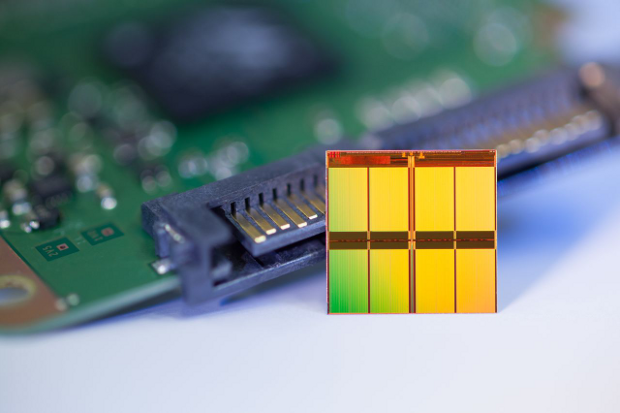Micron Technology, Inc., a global leader in storage technology, is announcing sampling of its next-generation 16nm (nanometer) process technology. Micron’s 16nm node is both the industry’s leading Flash process, and the most advanced processing node of any semiconductor device in sampling. This latest die shrink will enable the industry’s smallest 128-Gigabit (Gb) multi-level cell (MLC) NAND Flash memory devices.
Micron’s latest 128Gb MLC NAND devices represent numerous usage possibilities; including consumer SSDs, USB drives, flash cards, ultrathin devices, tablets, mobile handsets and cloud storage for data centers. At 16nm, Micron is providing the greatest number of bits per square millimeter, along with the lowest cost MLC device currently in existence. Micron’s 16nm process technology could yield almost 6 TB of storage from a single wafer!
Glen Hawk, vice president of Micron’s NAND Solutions Group states that “Micron’s dedicated team of engineers has worked tirelessly to introduce the world’s smallest and most advanced Flash manufacturing technology. Our customers continually ask for higher capacities in smaller form factors, and this next-generation process node allows Micron to lead the market in meeting those demands.”
According to industry analyst Gartner, “Cost reductions will always be fundamental to the NAND industry and so companies who can continue to lead on the Flash process technology will be poised for success, particularly in vertically integrated solutions.”
Micron is currently sampling their newest 16nm, 128Gb MLC NAND with select partners, with full production planned for the 4th quarter of 2013. Micron is already developing a new series of solid-state drives (SSDs) utilizing the new 16nm process technology, and anticipates shipping these SSDs in 2014. This newest development certainly helps Micron to solidify its global leadership in storage technology development.
 The SSD Review The Worlds Dedicated SSD Education and Review Resource |
The SSD Review The Worlds Dedicated SSD Education and Review Resource | 


One BIG down side to 128Gb nand…to get full speeds, you’ll probably have to get a 512GB or larger drive…cha-ching, there goes at least $400 dollars! One the other hand, for those who need fast data storage and not just a fast OS drive, 1TB and larger drives will be a somewhat affordable reality.
I’m curious as to how the size will affect P/E cycle counts. I’m sure it’s going down but just how far?